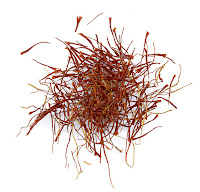 How to Plant Saffron Crocus
How to Plant Saffron Crocus
Although the crocus is famous for being one of the first flowers of spring, the saffron crocus is a fall bloomer. Crocus Sativus is hardy in zones six through nine, and thrives in full sun with rich, well-drained soil. It also prefers a sheltered location. Avoid windy spots, or areas that stay wet in the heat of summer, around downspouts or at the bottom of slopes. Purchase corms and plant them four inched deep and about four to six inches apart in late spring to early summer. A favorite of gophers, crocus should be protected with a mesh enclosure or other varmint resistant device. Years where there is a long, hot summer will give you the best harvest.
The Blooming Habits of the Saffron Crocus
The saffron crocus will send up flowers in late September to early October that will last for about three weeks. A good bloomer, look for upright, spiky lavender blossoms of about four to five inches with long red stigmas. These red stigmas are the saffron.
After what can be a delay of months, the crocus will produce narrow grass-like leaves that will generate nourishment for the plant. These leaves will persist for 9 to 12 weeks and then vanish until the next blooming. Be careful not to destroy the leaves prematurely. 
Propagating Saffron Crocus
The saffron crocus will grow additional corms from the mother plant. After three years, the corms can be dug up (during the summer when the plant is dormant), divided, and replanted. Break off the smaller outer corms from the mother plant and replant them in a separate location or at a distance of four to six inches from other plantings. Periodic thinning of the corms, at lease once every six years, will keep your crocus plants healthy and blooming well.
Monday
Saffron - most Expensive Spice
Labels: crocus sativus, expensive spice, saffron
Subscribe to:
Post Comments (Atom)















No comments:
Post a Comment